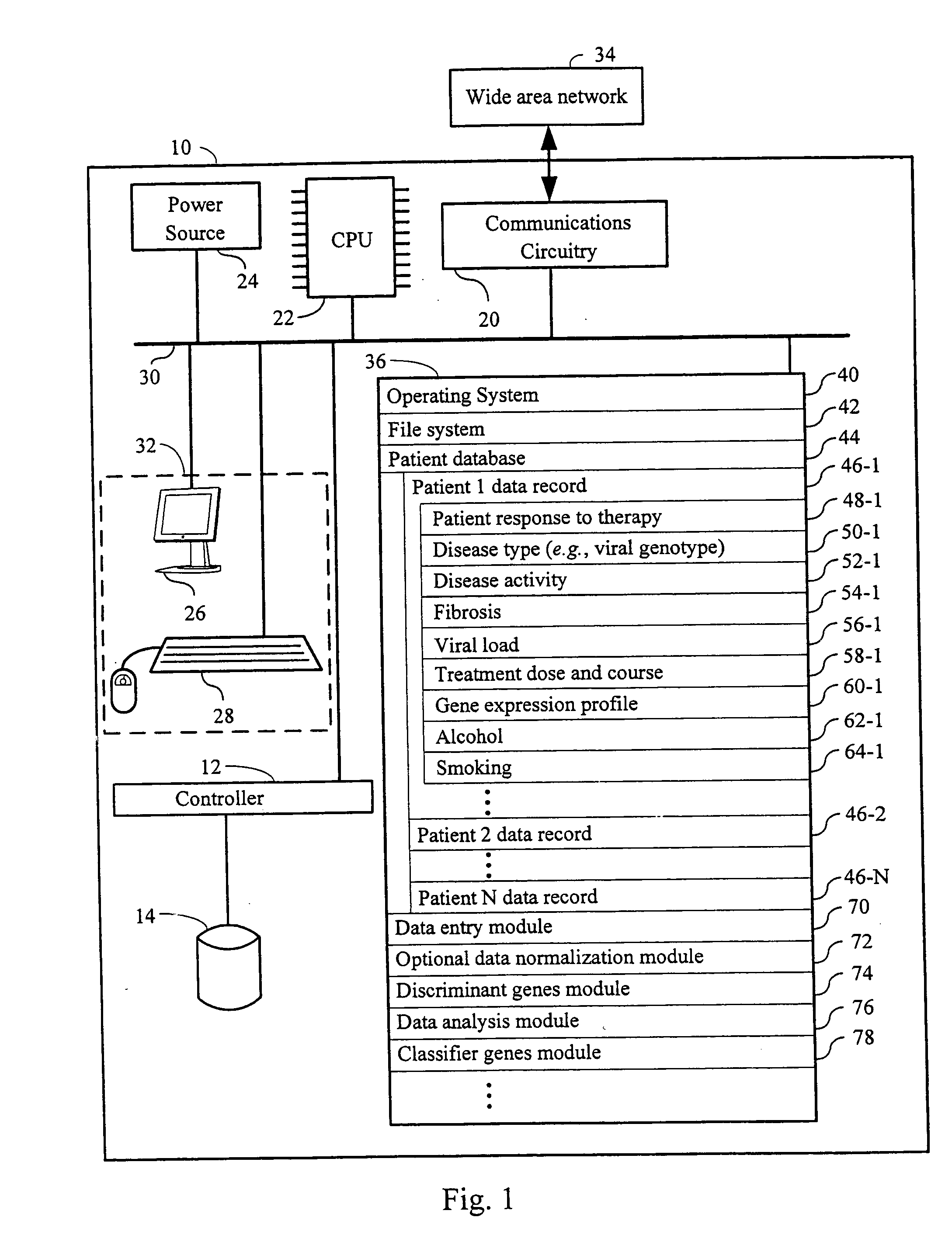Systems and methods for identifying diagnostic indicators
a diagnostic indicator and system technology, applied in the field of systems and methods for identifying diagnostic indicators, can solve the problems of inability to predict treatment outcomes, time-consuming, inaccurate, and inability to treat immunomodulatory diseases, so as to improve the therapeutic effect, reduce liver disease activity, and reduce joint swelling
- Summary
- Abstract
- Description
- Claims
- Application Information
AI Technical Summary
Benefits of technology
Problems solved by technology
Method used
Image
Examples
Embodiment Construction
[0081] A large proportion of patients do not respond to liver disease therapy regimens, or therapy regimens for diseases that may be treatable with an immunomodulatory disease therapy, for reasons that are unclear. In fact, some of the most effective standard therapies for a liver disease, or a disease that is treatable with an immunomodulatory disease therapy, are completely ineffective for some patients, even while exposing them to unpleasant, and often debilitating, side-effects. Representative liver diseases and diseases that are treatable with an immunomodulatory disease therapy are provided in Section 5.8, below. In addition, many of the standard therapies can be extremely costly and time consuming to implement. A method for predicting a patient's response to a given liver disease therapy regimen or a therapy regimen for a disease that is treatable with an immunomodulatory disease therapy could be used to tailor a treatment regimen that would be more likely to succeed, and the...
PUM
| Property | Measurement | Unit |
|---|---|---|
| Fraction | aaaaa | aaaaa |
| Magnetic flux | aaaaa | aaaaa |
| Fluorescence | aaaaa | aaaaa |
Abstract
Description
Claims
Application Information
 Login to View More
Login to View More - R&D
- Intellectual Property
- Life Sciences
- Materials
- Tech Scout
- Unparalleled Data Quality
- Higher Quality Content
- 60% Fewer Hallucinations
Browse by: Latest US Patents, China's latest patents, Technical Efficacy Thesaurus, Application Domain, Technology Topic, Popular Technical Reports.
© 2025 PatSnap. All rights reserved.Legal|Privacy policy|Modern Slavery Act Transparency Statement|Sitemap|About US| Contact US: help@patsnap.com



